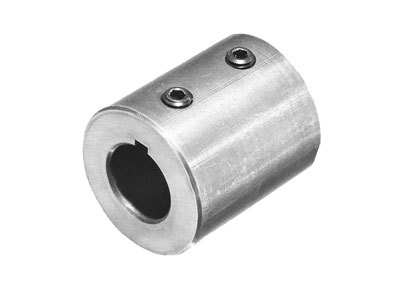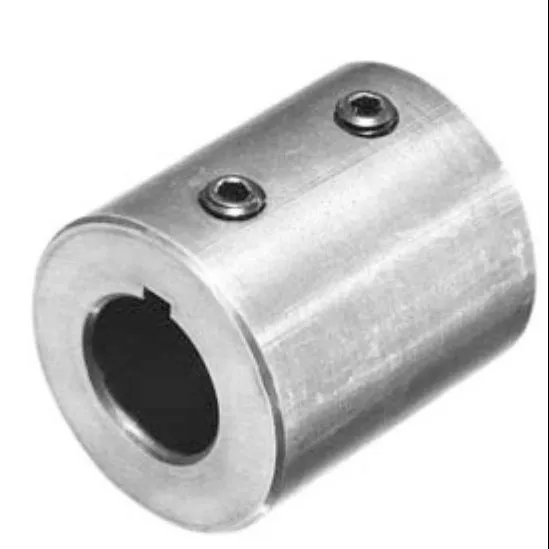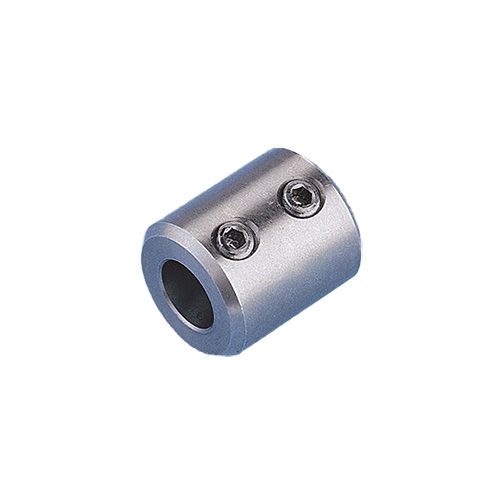Product Description
NL Nylon Sleeve, Nylon Coupling, Gear Sleeve, Gear Coupling (3A2006)
Description: the polyurethane elastomeric is a new material of polymer synthetic between rubber and plastic. It has both high strength of plastic and high elasticity of rubber. Its characteristics are: 1, a wide range of hardness. It still has rubber elongation and resilience at high hardness. The polyurethane elastomeric has a hardness range of Shore A10-D80. 2. high strength. At rubber hardness, the tensile strength, tear strength and load carrying capacity are much higher than general rubber material. At high hardness, its impact strength and flexural strength are much higher than plastic material. 3, wear-resistant. Its wear resistance is very outstanding, generally in the range of 0.01-0.10cm3/1.61km, about 3-5 times than rubber material. 4, oil resistant. The polyurethane elastomeric is a highly CHINAMFG polymer compound which has low affinity with non-polar mineral oil and is hardly eroded in fuel oil and mechanical oil. 5, good resistance to oxygen and ozone. 6, excellent vibration absorption performance, can do damping and buffering. In the mold manufacturing industry, it replaces rubber and springs.7, has good low temperature performance. 8, radiation resistance. Polyurethane is highly resistant to high energy radiation and has satisfactory performance at 10-10 deg radiation dose. 9, with good machining performance.
The polyurethane coupling, rubber coupling are made by injection with high quality TPU material or mould CSM/SBR. It is designing and special for all kinds of metal shaft coupling with very good performance of high tensile strength, high wear resistant, high elastic resilience, water resistant, oil resistant and excellent fatigue resilience, high impact resistant etc. We have full sets injection moulds and supply full range of GR, GS, MT, ML, MH, Hb, HRC, L, T, NM and Gear J series couplings etc. with high quality and excellent experience. Apply to all kinds of industrial metal shaft coupling.
Specifications:
material: TPU, CSM/SBR, NBR, nylon etc.
color: yellow, red, purple, green, black, beige etc.
surface: smooth
tensile strength: 8-55Mpa
hardness: 70-98Shore A
elongation: 400%-650%
density: 1.25g/cm3
elasticity impact: >25%
tear strength: 35-155KN/m
akron abrasion loss:<0.05cm3/1.61km
compression set (22h*70°C):<10%
working temperature: 120°C
standard size for polyurethane coupling:
GR14, GR19, GR24, GR28, GR38, GR42, GR48, GR55, GR65, GR75, GR90, GR100, GR110, GR125, GR140, GR160, GR180
GS14, GS19, GS24, GS28, GS38, GS42, GS48, GS55, GS65, GS75, GS90, GS100, GS110, GS125, GS140, GS160, GS180
MT1, MT2, MT3, MT4, MT5, MT6, MT7, MT8, MT9, MT10, MT11, MT12, MT13
ML1, ML2, ML3, ML4, ML5, ML6, ML7, ML8, ML9, ML10, ML11, ML12, ML13
MH45, MH55, MH65, MH80, MH90, MH115, MH130, MH145, MH175, MH200
HRC70, HRC90, HRC110, HRC130, HRC150, HRC180, HRC230, HRC280
L35, L50, L70, L75, L90/95, L99/100, L110, L150, L190, L225, L276
FALK-R 10R, 20R, 30R, 40R, 50R, 60R, 70R, 80R
SBT T40, T45, T50, T55, T60, T65, T70, T75, T80, T85, T90, T95, T100, T105, T108, T110, T115, T120, T125, T130, T135, T140, T145, T150, T154, T170, T185, T190, T210
Joong Ang CR0050, 0070, 571, 571, 2035, 2035A, 3545, 4560, 6070, 7080
MS571, MS571, MS1119, MS1424, MS1928, MS1938, MS2845, MS3860, MS4275, MS6510
D14, D14L, D20, D25, D30, D30L, D35, D40, D45, D49, D55, D65
5H, 6H, 7H, 8H, 9H, 10H, 11H
standard size for rubber coupling:
Hb80, Hb95, Hb110, Hb125, Hb140, Hb160, Hb180, Hb200, Hb240, Hb280, Hb315
HRC70, HRC90, HRC110, HRC130, HRC150, HRC180, HRC230, HRC280
L35, L50, L70, L75, L90/95, L99/100, L110, L150, L190, L225
NM50, NM67, NM82, NM97, NM112, NM128, NM148, NM168, NM194, NM214, NM240, NM265
NOR-MEX168-10, NOR-MEX194-10, NOR-MEX214-10, NOR-MEX240-10, NOR-MEX265-10
FCL1#, FCL2#, FCL3#, FCL4#, FCL5#, FCL6#, FCL7#, FCL8#
FCL90, FCL100, FCL112, FCL125, FCL140, FCL160, FCL180, FCL200, FCL224, FCL250, FCL280, FCL315, FCL335, FCL400, FCL450, FCL560, FCL630
Gear 3J, 4J, 5J, 6J, 7J, 8J, 9J, 10J, 11J, 12J, 13J, 14J
Hytre 4H, 5H, 6H, 7H, 8H, 9H, 11H
Tyre F40, F50, F60, F70, F80, F90, F100, F110, F120, F140, F160
SBT T75, T80, T85, T90, T95, T100, T105, T108, T110, T115, T120, T125, T130, T135, T140, T145, T150, T154, T170, T210
FCLpin #1, #2, #3, #4, #5, #6, #8
GR42, GR48, GR55, GR65, GR75
standard size for nylon coupling:
NL1, NL2, NL3, NL4, NL5, NL6, NL7, NL8, NL9, NL10
M28, M32, M38, M42, M48, M58, M65
packing in cartons
OEM & customized size are agreed
special supply all kinds of steel coupling for FCL, NM, MH, HRC, Love Joy, Joongang, Centafelx, XL-GR, Tyre
***when you enquiry, pls confirm type, size number and quantity***
/* January 22, 2571 19:08:37 */!function(){function s(e,r){var a,o={};try{e&&e.split(“,”).forEach(function(e,t){e&&(a=e.match(/(.*?):(.*)$/))&&1

What are the Maintenance Requirements for Sleeve Couplings to Ensure Optimal Performance?
Proper maintenance is essential to ensure the optimal performance and longevity of sleeve couplings. Regular inspections and maintenance practices help identify early signs of wear, misalignment, or other issues that may affect the coupling’s performance. Here are some maintenance requirements for sleeve couplings:
1. Regular Visual Inspections:
Perform visual inspections of the sleeve coupling regularly. Look for signs of wear, corrosion, or damage on the coupling surface. Check for any visible misalignment between the shafts connected by the coupling.
2. Lubrication:
Some sleeve couplings may require lubrication to reduce friction and wear. Check the manufacturer’s recommendations for the appropriate lubricant and lubrication interval.
3. Check for Misalignment:
Monitor the shaft alignment periodically to ensure that the coupling is not subjected to excessive misalignment. Misalignment can lead to premature wear and failure of the coupling and connected equipment.
4. Inspect Fasteners:
Check any fasteners, such as set screws or clamps, that secure the sleeve coupling to the shafts. Ensure they are tight and secure to prevent any slipping or movement.
5. Evaluate Operating Conditions:
Assess the operating conditions of the motion control system regularly. Consider factors such as temperature, humidity, vibration, and exposure to corrosive substances. Make necessary adjustments or upgrades to protect the sleeve coupling from adverse conditions.
6. Balance the Coupling:
If the coupling operates at high speeds, balancing may be necessary to prevent excessive vibration and ensure smooth performance. Consider dynamic balancing for high-speed applications.
7. Replace Worn or Damaged Couplings:
If visual inspections reveal signs of significant wear, damage, or deformation, it is essential to replace the sleeve coupling promptly. Continuing to use a damaged coupling can lead to further issues and compromise system performance.
8. Follow Manufacturer’s Guidelines:
Always follow the manufacturer’s maintenance guidelines and recommendations specific to the sleeve coupling model. Adhering to these guidelines will ensure that the coupling performs as intended and maintains its service life.
9. Record Keeping:
Keep records of maintenance activities and inspections for each sleeve coupling in the system. This recordkeeping will help track the coupling’s performance over time and identify any recurring issues.
By following these maintenance requirements, motion control systems can maintain the optimal performance of sleeve couplings, minimize downtime, and extend the life of both the coupling and connected equipment.

How do Sleeve Couplings Compare to Other Coupling Types, such as Flexible or Rigid Couplings?
Sleeve couplings, flexible couplings, and rigid couplings are three common types of couplings used in mechanical power transmission. Each type has its unique characteristics and applications. Here’s a comparison of sleeve couplings with flexible and rigid couplings:
- Sleeve Couplings: Sleeve couplings are simple and cost-effective couplings that join two shafts end-to-end. They provide some flexibility to accommodate slight shaft misalignments and are suitable for low to moderate torque applications. They are easy to install and do not require extensive maintenance. However, they have limited misalignment compensation and cannot handle significant shaft offsets.
- Flexible Couplings: Flexible couplings are designed to handle greater misalignments compared to sleeve couplings. They can accommodate angular, parallel, and axial misalignments, providing higher flexibility. Flexible couplings dampen vibrations and reduce shock transmission, contributing to smoother operation. They are available in various designs such as elastomeric, beam, and disc couplings, each offering specific benefits. Flexible couplings are ideal for applications where misalignments, vibrations, or shock loads are significant.
- Rigid Couplings: Rigid couplings are designed to connect shafts in a straight and rigid manner, without any flexibility. They provide accurate shaft alignment, making them suitable for precision applications. Rigid couplings are robust and transmit torque with high efficiency. However, they cannot accommodate misalignments and are susceptible to vibrations and shocks. Rigid couplings are commonly used in applications where precise shaft alignment is critical.
Choosing the appropriate coupling type depends on the specific requirements of the application:
- Alignment Requirements: If the application demands accurate shaft alignment and no misalignment compensation is needed, rigid couplings are suitable. For moderate misalignments, sleeve couplings may be sufficient, while flexible couplings are preferred for significant misalignments.
- Vibration and Shock Damping: If vibration and shock absorption are essential, flexible couplings are preferred due to their ability to dampen vibrations. Sleeve couplings have limited vibration damping capabilities, while rigid couplings do not dampen vibrations.
- Torque and Load: For low to moderate torque and loads, sleeve couplings are cost-effective choices. For higher torque applications with misalignment compensation, flexible couplings are preferred. Rigid couplings are suitable for high torque and precise alignment applications.
In summary, sleeve couplings provide a basic connection between shafts with limited misalignment compensation. Flexible couplings offer higher misalignment accommodation and vibration damping, making them versatile for various applications. Rigid couplings excel in precise shaft alignment requirements but lack flexibility and shock absorption.

What are the Different Types of Sleeve Couplings Available, and How do They Differ in Application?
Sleeve couplings come in various designs, each tailored for specific applications and operating conditions. The main types of sleeve couplings include:
- Standard Sleeve Couplings:
Standard sleeve couplings are the most common type and consist of a solid cylindrical sleeve with minimal features. They are used in general-purpose applications where the shafts are well-aligned and do not require significant misalignment compensation. These couplings are simple, cost-effective, and easy to install.
- Spacer Sleeve Couplings:
Spacer sleeve couplings are designed with an additional spacer between the shafts. The spacer provides extra clearance and allows for increased angular misalignment compensation. These couplings are suitable for applications where shafts may experience slight angular misalignment or need more axial spacing.
- Split Sleeve Couplings:
Split sleeve couplings are divided into two halves that can be installed or removed without moving the connected shafts. They are used in applications where it is challenging to slide the coupling over the shaft ends due to space constraints or other restrictions. Split sleeve couplings simplify maintenance and installation in confined spaces.
- Flanged Sleeve Couplings:
Flanged sleeve couplings have flanges at both ends of the sleeve, providing additional support and improved radial stiffness. The flanges help maintain shaft alignment and prevent lateral movement. These couplings are suitable for applications where precise shaft alignment is required, such as high-speed machinery.
- Ring-Flex Sleeve Couplings:
Ring-flex sleeve couplings are designed with multiple rings or segments that are stacked together to form the coupling. The segmented design provides flexibility and allows for significant angular and axial misalignment. These couplings are used in applications where substantial misalignment compensation is necessary, such as in drives with parallel shafts.
The choice of sleeve coupling depends on the specific requirements of the application. Standard sleeve couplings are suitable for well-aligned shafts, while spacer sleeve couplings are preferred for applications with slight angular misalignment. Split sleeve couplings are ideal for limited access installations, and flanged sleeve couplings offer enhanced alignment for high-speed applications. For applications with significant misalignment, ring-flex sleeve couplings provide the most flexibility and compensation.
When selecting a sleeve coupling, considerations include the magnitude of misalignment, shaft sizes, torque requirements, operating speed, and environmental conditions. Proper coupling selection ensures efficient power transmission, reduces wear on connected equipment, and extends the lifespan of the mechanical system.


editor by CX 2024-02-27
